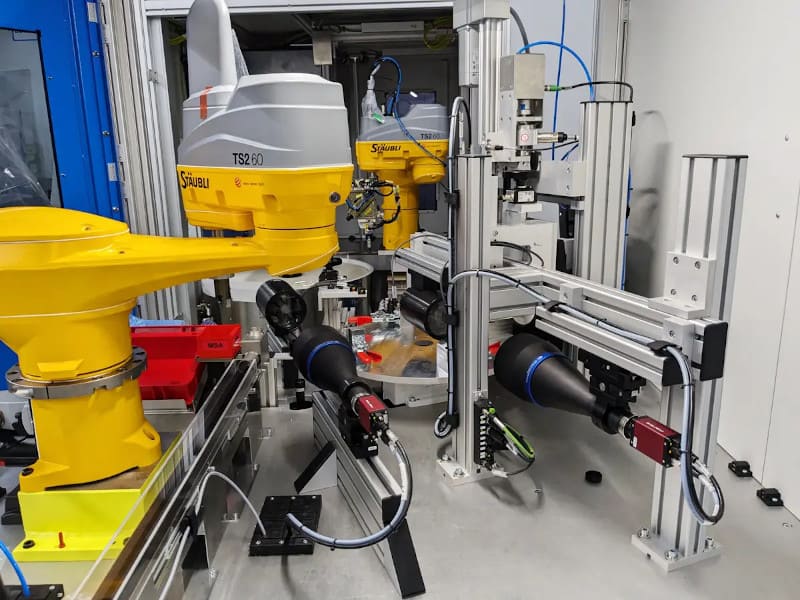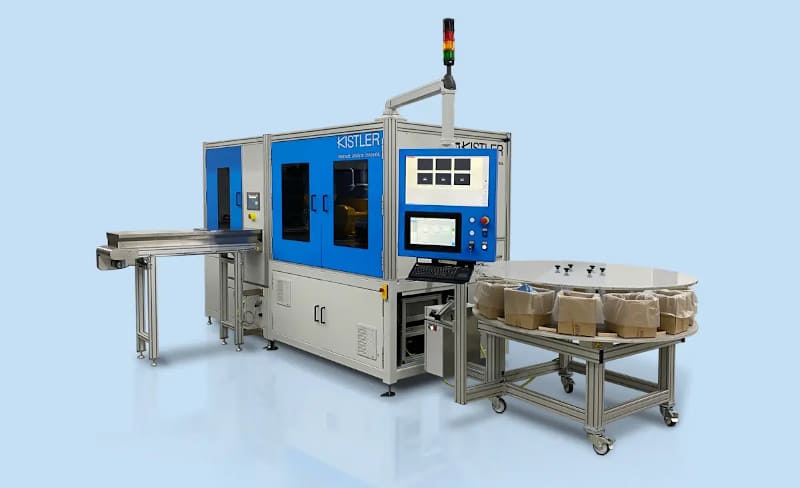Kistler is currently integrating its knowledge in modular automation technology with its established optical quality inspection systems. Under the label Automated Vision Inspection, the company presents its initial fully automated turnkey system for the quality assessment of delicate components.
The uniquely designed pick-and-place robot is directed by image processing and can, for instance, extract parts from blisters or accurately select them from bulk material. Accurate camera technology subsequently examines the components and sorts the acceptable ones back into blisters if needed. Defective items are automatically separated and eliminated if requested by the customer.
Testing sensitive components automatically presents challenges: accurate detection of parts is crucial for robots to handle them delicately, whether they are introduced to the test system in bulk or in blisters. The vision system must accurately identify any mistakes in the positioning of the components. Numerous extremely fragile components also pose additional difficulties for the inspection procedure. For instance, it is frequently unfeasible to position the components in front of the camera at the best angle on a uniform system with a sloped surface or a transparent plate.
In this context, the testing knowledge of Kistler’s specialists is utilized. They have dedicated themselves to discovering innovative solutions that fulfill the unique needs of the components. Kistler has now designed and constructed multiple fully automated machine vision inspection systems for the quality assessment of these delicate components, and has implemented them for clients in the automotive, electronics, and home appliance sectors.

Tailored optical quality assessment in moments
One of these vision inspection systems evaluates highly sensitive plastic connectors. As the electrical functionality is verified manually, the system conducts the optical inspection to assess dimensional precision and surface flaws. To accomplish this, workers arrange the components into blisters, which they subsequently pile on a trolley and transport into the system. The system subsequently supplies the blisters one by one to a camera-regulated, high-accuracy pick-and-place robot that identifies the fragile components, extracts them from the blister with exact precision, and places them into the inspection matrix.
As the robot proceeds to the subsequent test item, the piece experiences three complete optical quality checks. The system verifies seven parameters with precision of 0.005 millimeters. The examined good components are subsequently labeled before being returned to the blister by the pick-and-place robot, while defective parts are sorted out automatically. To avoid the accidental use of the faulty components, the system eliminates them. Regardless of how intricate the process seems, the cycle time for testing a component is remarkable: Based on the part’s complexity and inspection needs, such a system can achieve a two-second cycle time.
Automated optical inspection systems – Kistler expands its portfolio
The new systems are based on Kistler’s long-established solutions for the automated optical testing of mass-produced and serial parts, as well as on the company’s many years of experience in automation technology. In addition to largely standardized vision inspection systems such as the KVC 121, 621 or 821, the measurement technology expert offers customized optical inspection systems that can operate either as stand-alone units or integrated into the production line. Additional modules can be added as needed. These include, for example, automated laser marking of tested parts

